Ponds for wildlife
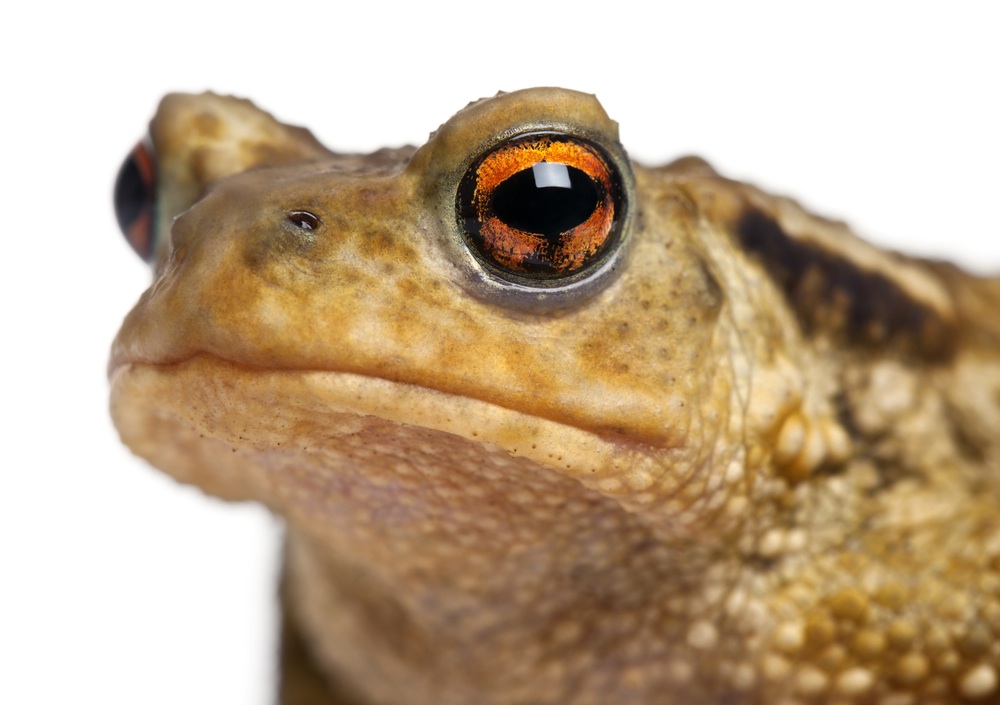
Many people enjoy attracting wild birds to their gardens, and now there's an increasing trend to do the same for amphibians. It is not only fun to see a contented toad hopping around the lawn after it has rained, but it also means that many of the garden pests which can harm your crops and flowers will be gobbled up by such residents, without the need to resort to pesticides.
Unfortunately, one of the main objections among the gardening fraternity about catering for amphibians is that the garden needs to be untidy. In reality however, this doesn't need to be the case. A more informal gardening style doesn't have to look messy!
What is required
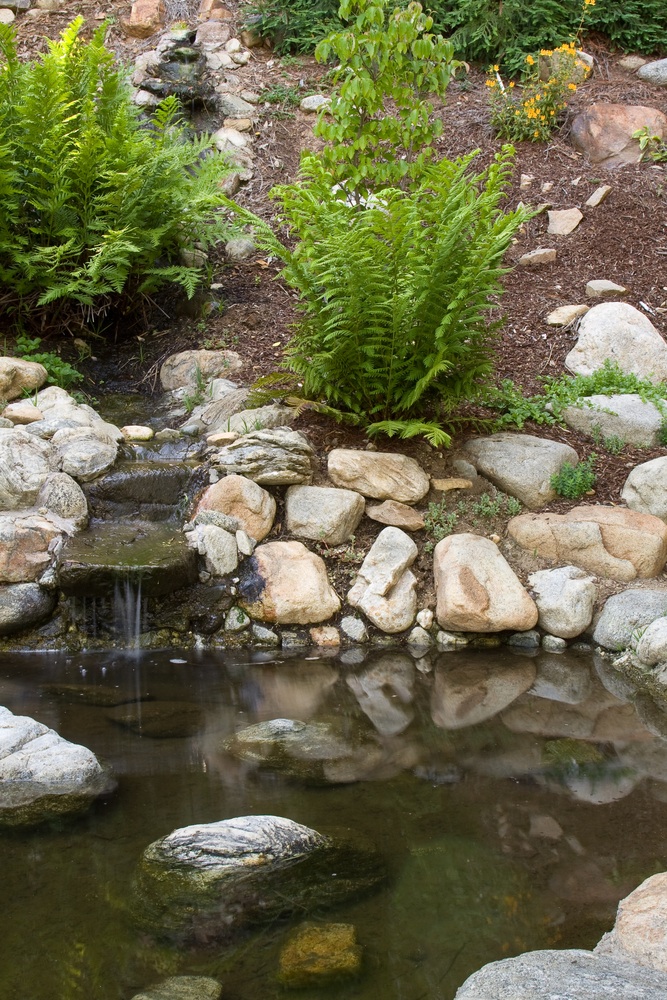
One of the key things which all garden amphibians require, be they newts, frogs or toads, is somewhere to spawn in the spring. A defining characteristic of the group is the way that they must return to water, in order to breed, and this means having a pond of some type in the garden. It does not have to be a large pond, but the key thing to making it amphibian-friendly is to ensure they can move in and out of the water easily.
Constructing a pond these days is quite straightforward. Basically, you can choose between a preformed, moulded design which fits into a hole in the ground, or opt for a more flexible design using a pond liner. What you need to allow for are easy access points for the amphibians, and a shallower area, which means that a liner can be more flexible, in terms of creating a pond for wildlife. Nevetheless, a moulded pond with marginal shelves can be successful too.
Both types of pond can be purchased without difficulty from many garden centres, although it may be harder to track down the latest options such as TetraPond's Pondtex, which makes a stronger, more durable liner than conventional butyl rubber. It is also highly resistant to the effects of ultra-violet light, which will degrade liners over time.
The size of pond
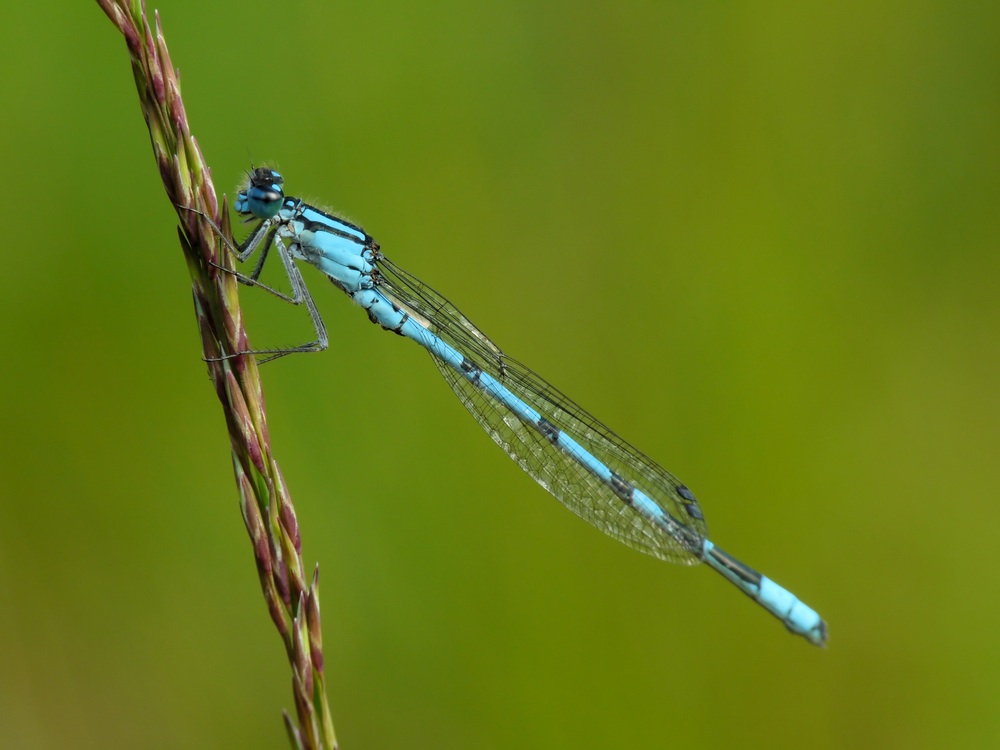
Working out the quantity of liner required is reasonably straightforward. Simply take the maximum length and width measurements for the pond. Then work out the maximum depth, and double this figure, adding the result to both the length and width measurements. Finally, add an additional 45cm (18in) to each of these figures, to allow for an overlap around the pond. This will then give you the size of the liner that will be required.
A relatively large pond is likely to be more successful and appealing to amphibians, and will also make it easier to establish aquatic plants. These help to provide cover and protection, as well as providing resting places for attractive invertebrates such as damselflies, which are likely to lay their eggs in the pond.
The location
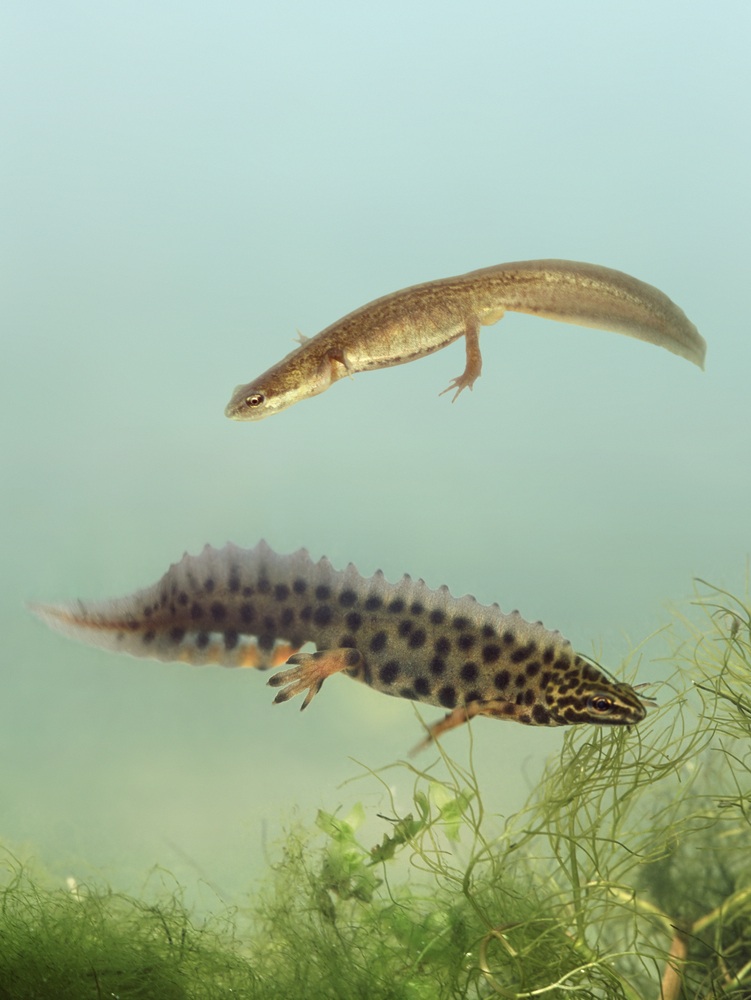
Choose an area away from trees, which will shade the pond in summer and drop their leaves here in the autumn. A relatively open spot, which is not in direct sunlight throughout the day, will be ideal. If you have an area of lawn, the pond can be sited towards the back, where it can be seen, and yet taller vegetation can be incorporated here to provide some cover around it. Reeds can be ideal, and you can have a bog garden too, which serves as the overflow from the pond during wet weather. A small area of liner set shallowly in the soil here will provide the basis for this feature.
Construction guidelines
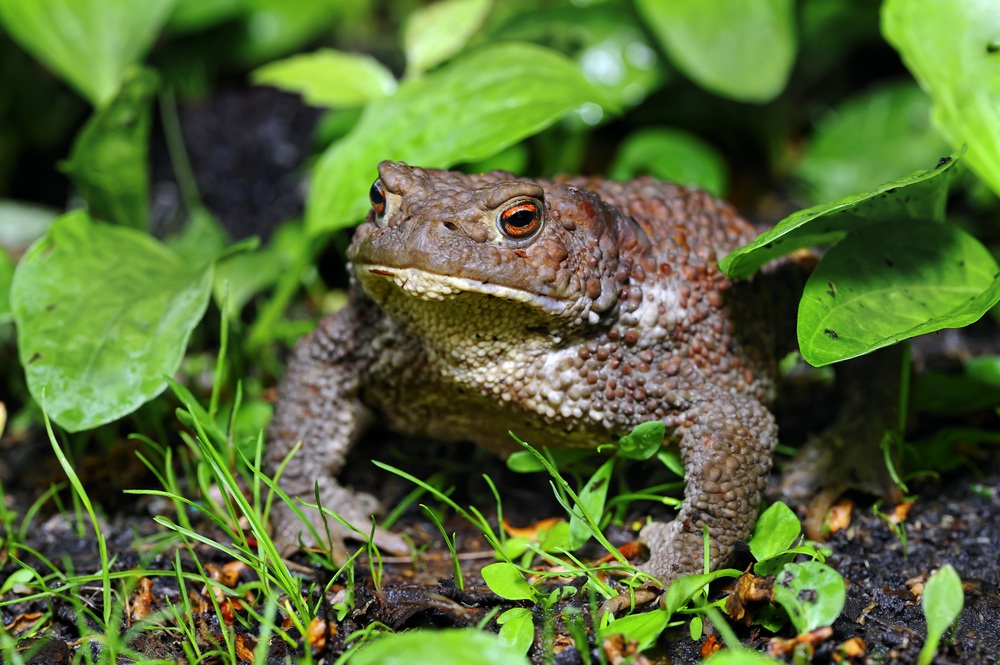
Smooth newts - a pairLiner ponds themselves need to be bedded down on a sandy base on an underlay. Be sure to remove any roots in the soil, which might otherwise grow back and puncture the liner.
Spread the liner as you fill up the pond with a hose, so the edges do not slip into the water, having placed it carefully in position to allow for the area around the perimeter. In the case of preformed pond, it is very important that this is level, because otherwise it will appear unsightly. Check its positioning with a spirit-level, and make any necessary adjustments, before filling it.
Add a pond conditioner to remove any chlorine, and then put in the plants. It is quite possible to create a natural setting with native water-lilies, but this is not essential. These need to be placed on the base of the pond in deeper water, whereas marginal plants are set around the edge, in marginal containers. This will help to ensure their roots do not penetrate into the liner in due course.
Oxygenating plants, which are important for amphibian spawnings, can just be scattered in the water. The spring is a good time to start a pond, simply because the plants should grow well through the rest of the summer. They will then be well-established by the following year, when amphibians in your area will be seeking to return to water.
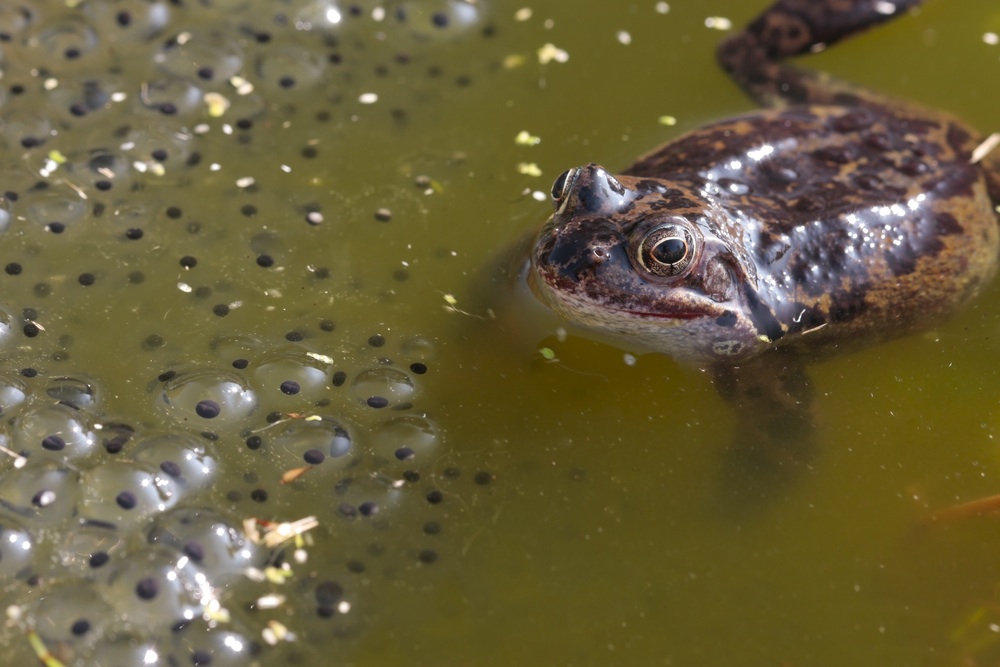
Common toad in gardenMeanwhile, start creating an amphibian-friendly garden as well. Sow a wildflower meadow in one corner if possible, and set hollow logs around here to create retreats, incorporating these too in more shady localities, which should be kept well-watered, especially during dry weather. This area is then likely to become a refuge for amphibians, drawn here by the damp surroundings and a greater likelihood of finding food such as insects and worms at this stage.
Looking forward
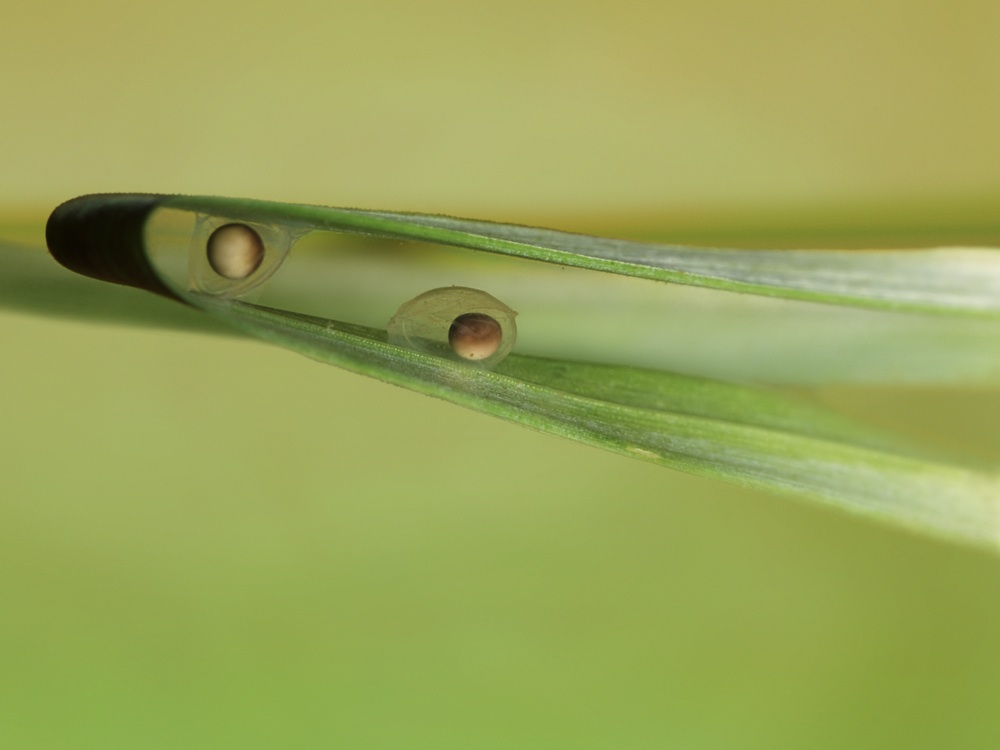
It is not easy to determine when your pond will be colonised, but hopefully, if there are amphibians in the neighbourhood, you will see them before next spring. A good time to look is after a summer shower, which often brings them out of their hiding places.
Common frog and spawnMeanwhile you could add fish to the pond, but bear in mind that occasionally, fish have been drowned by over-amorous male frogs seizing them in the spring, in the mistaken belief they are females. If the frog clamps its front legs around the gill covers, the fish will be unable to breathe. On the other hand, fish are likely to prey on newt and frog tadpoles, so it is better to stick to a fish-free environment, if you want to encourage amphibians.
Newts are harder to spot in a pond than frogs or toads, but they will sometimes newt eggscome up to the surface if you do have fish, to steal some of their food. They too will then emerge back on to land once spawning is complete.
The female newt lays her eggs individually (see photo, right), on the underside of oxygenating plants such as Canadian pondweed (Elodea). Frogs lay masses of spawn, whereas toads, which tend to breed slightly later, lay their eggs in strands. It will probably be several years before the young amphibians themselves return here to spawn.